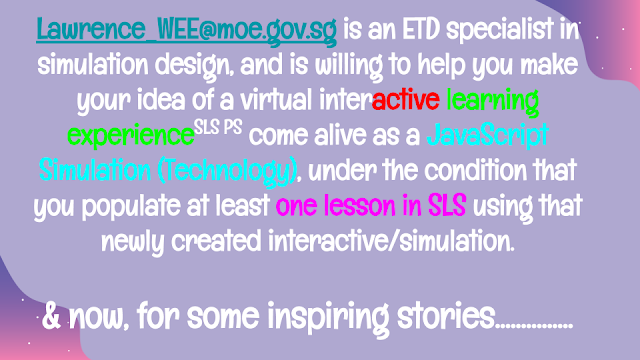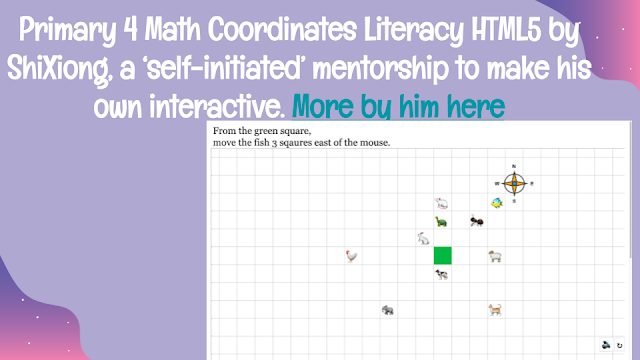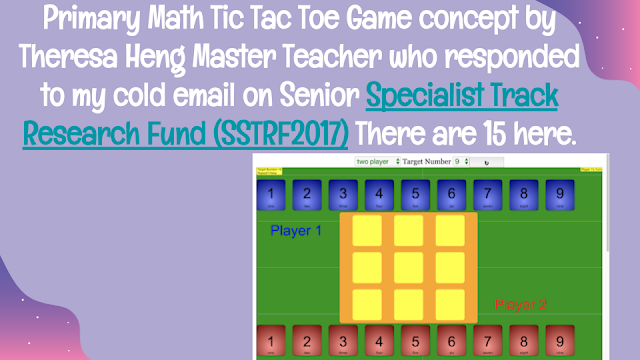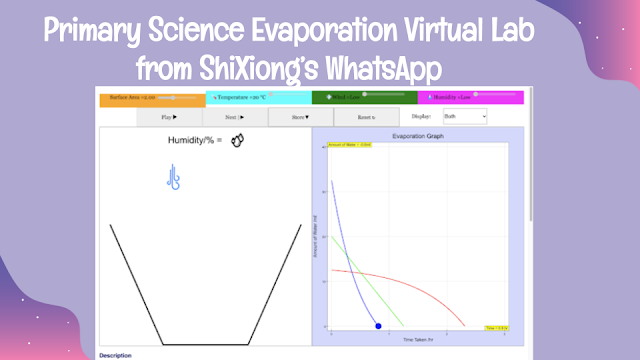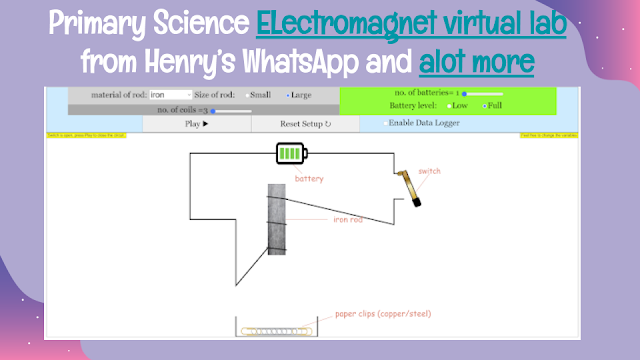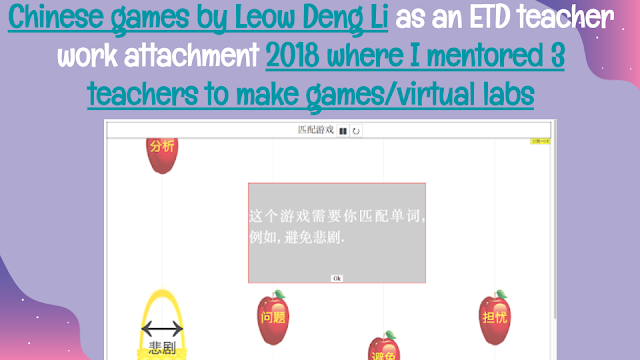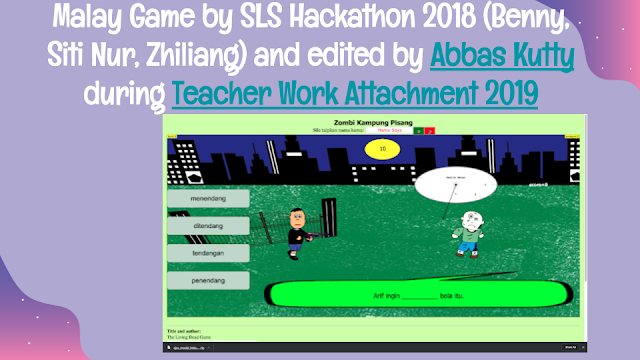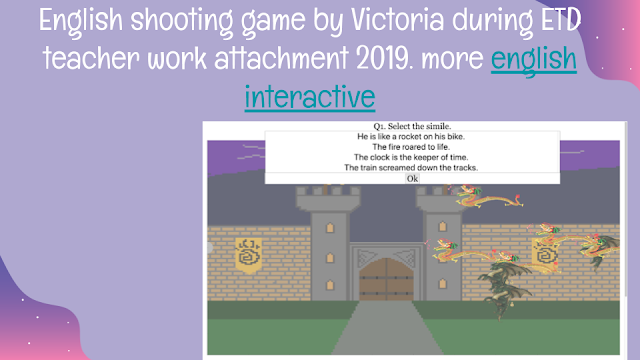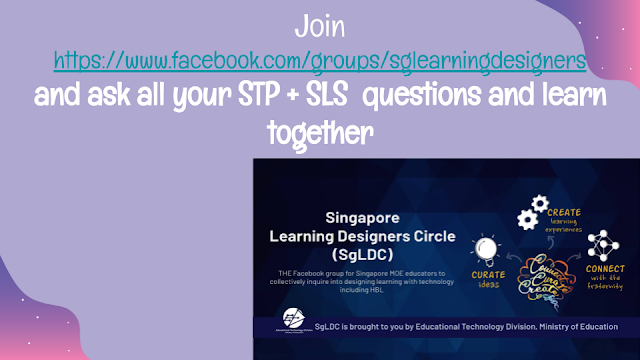Overview:
This briefing document summarizes the key themes and important information gleaned from the webpage documenting a Google Meet sharing session held on November 26, 2020, at Kuo Chuan Presbyterian Primary School (KCPPS) as part of the "Open Educational Resources / Open Source Physics @ Singapore" initiative. The session appears to have focused on the sharing of resources and tools related to interactive learning, particularly in science and mathematics, utilizing open educational resources (OER) and open-source physics (OSP) simulations.
Main Themes and Important Ideas:
- Sharing of Interactive Learning Resources: The primary focus of the session was the dissemination and showcasing of a wide array of interactive digital resources. The webpage lists numerous HTML5 JavaScript simulation applets and other interactive tools developed or curated by the "Open Educational Resources / Open Source Physics @ Singapore" project and shared during the KCPPS I-Cube sharing.
- Emphasis on Open Educational Resources (OER) and Open Source Physics (OSP): The very title of the initiative and the webpage underscores a commitment to OER and OSP principles. This suggests a focus on providing educators with freely accessible and potentially modifiable resources for teaching and learning. The mention of the Easy JavaScript/JavaScript Simulations Toolkit (EJS) further reinforces this, as it is an open-source tool for creating such simulations.
- Wide Range of Subjects and Levels: The listed resources cover a diverse range of topics, primarily in science (physics, chemistry, biology) and mathematics. Furthermore, the resources appear to be relevant for various educational levels, from primary school (e.g., "Area and Perimeter Move by Squares for Primary School," "2 Bar Magnets on a level surface for Primary School Science") to secondary levels (e.g., "O level Chemical Ionic Bonding Dot and Cross Diagrams," "SLS Wave in 1D of Particles and Springs") and even potentially introductory tertiary levels (as suggested by some of the more advanced physics simulations).
- Utilization of JavaScript and HTML5: A significant portion of the listed resources are described as "HTML5 JavaScript Simulation Applet," indicating a reliance on web-based technologies for delivering interactive learning experiences. This choice makes the resources potentially accessible across various devices with a web browser, without the need for specific software installations.
- Examples of Specific Resources and Their Focus: The extensive list provides concrete examples of the types of interactive tools being shared. These include:
- Physics simulations: Covering topics like energy stores and transfers ("LOL Energy Stores and Transfers Diagram Master Template"), mechanics ("Mass and Spring in Gravity," "SHM Bungee"), magnetism ("Suspended Magnet," "Stacking Ring Magnets"), electricity ("Strength of an Electromagnet"), waves ("SLS Standing & Longitudinal waves"), and more.
- Chemistry simulations: Focusing on areas like titration ("2017 EduLab Titration Curves"), chemical bonding ("O level Chemical Ionic Bonding Dot and Cross Diagrams," "O level Chemical Covalent Bonding Dot and Cross Diagrams"), and even organic molecules ("Organic molecules Javascript HTML5 Applet Simulation Model").
- Mathematics applets: Covering topics such as area and perimeter ("Area and Perimeter Move by Squares"), addition ("P3/4 Math Addition Game"), geometry ("Circle Plus Questions," "Area of Trapezium"), and coordinates ("Eight point compass Interactive For Primary 4 Math Coordinates Literacy").
- Biology interactives: Including topics like food webs ("🌊Food Web of Sungei Buloh Interactive") and life cycles ("Life cycle of Frog, Human, Chicken... Drag and Drop Quiz").
- Games for learning: Utilizing game-based approaches for subjects like math ("SLS Game Tic Tac Toe Addition"), language ("🐉Shoot the simile and metaphor dragons," various Malay language games), and even chemistry ("🧪Balancing Chemistry Equation").
- Tools for teachers: Such as the "EJSS Sim Web Editor" and resources related to e-assessment ("SSTRF_2020_ETD_03 Designing Interactive e-Assessment Test Items using Open Source Tools").
- Integration with the Student Learning Space (SLS): Several resources are prefixed with "SLS," suggesting their integration or applicability within Singapore's national learning management system, the Student Learning Space. This indicates an effort to leverage OER and OSP within the existing educational infrastructure.
- Recognition and Collaboration: The webpage mentions the "2020 Excellence in Physics Education Award from American Physical Society goes to Open Source Physics Team," highlighting the recognition of the work being done in this area. It also implicitly suggests collaborations through the sharing at KCPPS and the inclusion of resources developed by various individuals (e.g., Darren Z Tan, Grace Leong, Theresa).
- Emerging Technologies and Concepts: The inclusion of resources mentioning "AI in Assessment" ("🤖2020 MOE Professional Forum for Research and Practice AI in Assessment") and tools leveraging AI models like Gemini Pro ("🌐 Creating Interactives Earthquake Map," "Beam Torque and Forces Simulation using Gemini Pro 2.5") indicates an exploration of how newer technologies can be integrated into educational resources.
Notable Quotes and Observations:
- The title itself, "20201126 KCPPS I-Cube Sharing at Kuo Chuan Presbyterian Primary School - Open Educational Resources / Open Source Physics @ Singapore," clearly states the purpose and context of the webpage.
- The extensive list of resources, while not directly quoting, speaks volumes about the breadth and depth of the materials being shared within this initiative. The sheer number and variety of interactive simulations and games highlight a strong focus on engaging students through active learning.
- The consistent naming convention of many resources as "[Topichttps://lpetetd.wixsite.com/slsdesignchallenge/tools" and "https://sites.google.com/moe.gov.sg/ictlt2018primaryschools/primary-school-learning-experienceendfaq" suggests a wider network of educators and initiatives involved in promoting innovative teaching practices.
- The "Popular Tags" section provides a glimpse into frequently accessed topics, including "Physics," "Mathematics," "Area and Perimeter," and "Circles," indicating areas of high interest within the platform.
Conclusion:
The webpage documents a significant sharing session focused on leveraging open educational resources and open-source physics simulations to enhance teaching and learning, particularly in science and mathematics, within the Singaporean context. The wide array of interactive HTML5 JavaScript applets and games showcased the potential of these resources to engage students across different grade levels and subjects. The event highlights a collaborative effort among educators and initiatives to promote innovative pedagogical approaches through freely accessible and adaptable educational materials, with a growing interest in integrating emerging technologies like AI.
Study Guide: KCPPS I-Cube Sharing and Open Educational Resources
Overview of the Source Material
This source is a webpage from "Open Educational Resources / Open Source Physics @ Singapore" documenting a Google Meet sharing session held on November 26, 2020, at Kuo Chuan Presbyterian Primary School (KCPPS) as part of the I-Cube initiative. The primary content of the page is a list of resources, predominantly links to HTML5 JavaScript simulation applets and other interactive tools, categorized under the heading "Resources." These resources cover a wide range of subjects, including physics, chemistry, mathematics, and language learning, and appear to be developed and shared by educators for educational purposes. The page also contains basic navigational elements and website information.
Key Themes
- Open Educational Resources (OER): The website itself promotes the use and sharing of freely accessible and openly licensed educational materials. The listed resources exemplify this concept.
- Interactive Learning: The heavy emphasis on JavaScript simulation applets and interactive games suggests a focus on engaging students through active participation and visualization.
- Technology Integration in Education: The sharing session and the nature of the resources highlight the use of digital tools and platforms (like Google Meet and HTML5) to enhance teaching and learning.
- Collaborative Sharing and Development: The diverse authorship of the resources (indicated by names like Darren Z Tan, Grace Leong, Theresa, etc.) implies a community of educators contributing and sharing their creations.
- Variety of Subjects and Levels: The resources span multiple disciplines (science, mathematics, language) and appear to target various educational levels, including primary and secondary school.
Quiz
Answer the following questions in 2-3 sentences each.
- What event is the primary focus of the webpage documented in the source material?
- What is the main type of resource being shared on this webpage? Provide a specific example mentioned in the text.
- What does the acronym "OER" stand for, based on the website's title?
- What format are the majority of the listed resources created in, according to the descriptions?
- Name two subject areas for which interactive resources are provided on this webpage.
- What does the mention of "Google Meet sharing" suggest about how this information was initially disseminated?
- Who are likely the primary creators and intended users of the resources listed on this page?
- What do terms like "Simulation Applet" and "Interactive" suggest about the learning experience these resources aim to provide?
- Besides simulations, what other types of resources or tools are briefly mentioned on the page?
- What does the "Breadcrumbs" section at the top of the page indicate about the structure of the website?
Answer Key
- The primary focus of the webpage is a documented Google Meet sharing session that took place on November 26, 2020, at Kuo Chuan Presbyterian Primary School (KCPPS) as part of their I-Cube sharing initiative.
- The main type of resource shared on the webpage is interactive learning tools, primarily HTML5 JavaScript simulation applets. For example, "Mass and Spring in Gravity HTML5 JavaScript Simulation by Darren Z Tan" is one such resource.
- Based on the website's title, "Open Educational Resources / Open Source Physics @ Singapore," the acronym "OER" stands for Open Educational Resources.
- The majority of the listed resources are created in HTML5 JavaScript, as indicated by phrases like "HTML5 Applet Javascript" and "JavaScript HTML5 Applet Simulation Model" in their descriptions.
- Two subject areas for which interactive resources are provided on this webpage are science (with examples like "Mass and Spring in Gravity" and "O level Chemical Ionic Bonding") and mathematics (with examples like "Area and Perimeter Move by Squares" and "Circle Plus Question").
- The mention of "Google Meet sharing" suggests that the information and potentially demonstrations of these resources were initially presented and discussed in a virtual meeting format using the Google Meet platform.
- The primary creators and intended users of these resources are likely educators (teachers and curriculum developers) who are looking for engaging and interactive tools to enhance their teaching and learning activities for students at various levels.
- Terms like "Simulation Applet" and "Interactive" suggest that these resources aim to provide a hands-on, exploratory learning experience where users can manipulate variables, observe outcomes, and actively engage with the subject matter.
- Besides simulations, the page also mentions interactive games (e.g., "➕P3/4 Math Addition Game by Martin using Scratch"), tools for specific tasks (e.g., "Micrometer Manual use JavaScript HTML5 Applet Simulation Model"), and potentially other documents or slides linked within the text (though not explicitly detailed).
- The "Breadcrumbs" section indicates the user's current location within the website's hierarchy, showing that the current page ("20201126 KCPPS I-Cube Sharing at Kuo Chuan Presbyterian Primary School") is located under the "Home" section.
Essay Format Questions
- Discuss the significance of Open Educational Resources (OER) in contemporary education, referencing the types of materials presented on this webpage as examples.
- Analyze the potential benefits and challenges of using interactive simulations and applets, such as those listed in the source, for teaching and learning science and mathematics in primary and secondary schools.
- Explore the role of technology and digital platforms in facilitating collaboration and sharing of educational resources among educators, using the "Open Educational Resources / Open Source Physics @ Singapore" website as a case study.
- Based on the variety of topics covered by the resources, discuss the potential impact of such open-source initiatives on curriculum development and pedagogical approaches across different subject areas.
- Evaluate the importance of freely accessible and adaptable educational materials in promoting equitable access to quality education, considering the context of the resources shared on this webpage.
Glossary of Key Terms
- Open Educational Resources (OER): Teaching, learning, and research materials in any medium that reside in the public domain or have been released under an open license, permitting their free use, adaptation, and distribution with few or no restrictions.
- HTML5: The latest evolution of the standard that defines HTML. It is used for structuring and presenting content on the World Wide Web and includes features for multimedia and interactive elements.
- JavaScript: A high-level, often just-in-time compiled programming language that conforms to the ECMAScript specification. It is commonly used to make web pages interactive and provides dynamic functionality.
- Simulation Applet: A small, self-contained program or application, often embedded in a web page, that models a real-world phenomenon or process, allowing users to interact with it and observe the outcomes.
- Interactive Learning: An educational approach that emphasizes active engagement and participation of the learner through activities, tools, and resources that respond to their actions and provide feedback.
- Google Meet: A video conferencing service developed by Google, used for online meetings, video calls, and collaboration.
- I-Cube Initiative: Based on the context, this likely refers to an initiative or program at Kuo Chuan Presbyterian Primary School focused on innovation, integration of technology, or a specific pedagogical approach (though the exact meaning is not fully defined in the excerpt).
- Primary School: An educational institution for children typically between the ages of about five to eleven.
- Secondary School: An educational institution that provides secondary education, following primary school.
- Open Source Physics (OSP): A project and community focused on creating and sharing open-source computational tools and resources for physics education. The "@ Singapore" part indicates a local instantiation or contribution to this broader effort.
Google meet sharing 20201126 KCPPS I-Cube Sharing at Kuo Chuan Presbyterian Primary School
https://weelookang.blogspot.com/2020/11/20201126-kcpps-i-cube-sharing.html
- Actual slides
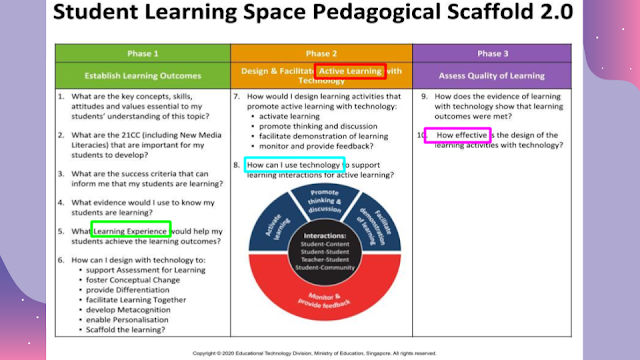 |
| Slides |
Frequently Asked Questions: Open Educational Resources / Open Source Physics @ Singapore
1. What is the primary focus of the "Open Educational Resources / Open Source Physics @ Singapore" initiative?
This initiative centers on the development and sharing of open educational resources (OER), particularly interactive simulations and applets, primarily using JavaScript and HTML5. These resources cover a wide range of subjects, especially physics and mathematics, and are designed to enhance learning experiences for students in Singapore, from primary to secondary levels.
2. What types of resources are available through this initiative?
The initiative offers a diverse collection of resources, including interactive JavaScript/HTML5 simulations and applets covering topics such as mechanics (e.g., mass and spring systems, projectile motion), waves (e.g., standing waves), electricity and magnetism (e.g., electromagnets, magnetic fields), heat transfer, chemistry (e.g., ionic and covalent bonding, titration curves), mathematics (e.g., area and perimeter, geometry, algebra), and even games for learning (e.g., math addition games, vocabulary builders).
3. Who is the intended audience for these open educational resources?
These resources are primarily intended for educators and students in Singapore, spanning primary, secondary, and potentially tertiary levels, as indicated by the range of topics and the mention of sharing at a primary school and resources relevant to O-level and A-level chemistry. The resources can be used for classroom teaching, self-learning, and exploration of scientific and mathematical concepts.
4. Are these resources freely available for use?
Yes, the resources are presented under the umbrella of "Open Educational Resources," and the website footer explicitly states that the "Contents are licensed Creative Commons Attribution-Share Alike 4.0 Singapore License." This implies that the materials are freely available for use, adaptation, and sharing, provided that attribution is given and any derivative works are shared under a similar license. However, commercial use of the EasyJavaScriptSimulations Library may require a separate license.
5. What is the role of interactive simulations in this initiative?
Interactive simulations are a core component of this initiative. They provide students with hands-on, visual ways to explore abstract concepts, conduct virtual experiments, and observe the effects of changing parameters. This active engagement is intended to foster deeper understanding and make learning more engaging and effective.
6. How are these resources developed and shared?
The resources appear to be developed by educators and contributors within Singapore, often shared through platforms like blog posts and linked websites (e.g., Wixsite, Google Sites). The initiative also seems to involve events like "I-Cube Sharing" sessions and "SLS Hackathons," suggesting a collaborative approach to creating and disseminating these educational tools. The mention of the "Easy Java/JavaScript Simulations Toolkit" indicates the use of specific tools for development.
7. What subjects and topics are most heavily represented in the collection?
Based on the list of resources, physics and mathematics appear to be the most heavily represented subjects, with a significant number of simulations related to mechanics, waves, electromagnetism, geometry, and algebra. Chemistry is also well-represented with simulations on bonding and titration. There are also examples related to biology, economics, and language learning, indicating a growing range of subjects.
8. Is there any recognition or impact associated with this initiative?
Yes, the initiative has received recognition. The "Open Source Physics Team" was awarded the "2020 Excellence in Physics Education Award from the American Physical Society." Additionally, one of the websites associated with this initiative was "Recommended in Journal Paper as One of the Top Three Websites for COVID-19 virtual labs education," highlighting its relevance and impact in providing valuable online learning resources, especially during periods of remote learning.

